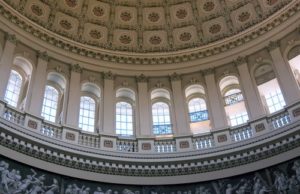
Public Notice in Administrative Law: Ensuring Transparency and Participation
Public notice is a cornerstone principle of administrative law, playing a vital role in ensuring transparency, participation, and accountability in the regulatory process. In the realm of administrative law, public notice requirements serve to inform the public of proposed regulations, policies, and government actions, giving individuals, organizations, and affected parties the opportunity to provide input, voice concerns, and participate in the decision-making process. This article explores the significance of public notice in administrative law, examining its legal basis, purposes, mechanisms, and the broader implications for democratic governance.
The Legal Basis of Public Notice in Administrative Law:
1. Due Process and the Administrative Procedure Act (APA): Public notice requirements find their legal basis in the constitutional principles of due process, particularly the right to notice and an opportunity to be heard before one’s interests are adversely affected. The Administrative Procedure Act (APA) of 1946 further solidified and standardized public notice requirements in federal administrative law by establishing guidelines for rulemaking and providing for public participation in the regulatory process.
2. State and Local Laws: In addition to the APA, various state and local jurisdictions have established their own public notice requirements to ensure transparency and participation in administrative decision-making. While specifics may vary, the overarching objective is to provide affected individuals and communities with the opportunity to be informed and actively engage in the regulatory and decision-making processes at the state and local levels.
Purposes and Benefits of Public Notice:
1. Transparency and Accountability: Public notice is essential for promoting transparency and accountability in administrative decision-making. By requiring agencies to provide notice of proposed regulations and actions, the public gains insight into the intentions, justifications, and potential impacts of regulatory measures. This transparency enables affected parties and interested individuals to hold agencies accountable for their actions and ensures that decisions align with statutory mandates and the public interest.
2. Participation and Stakeholder Engagement: Public notice allows affected individuals and entities to engage in the regulatory process and contribute their insights, experiences, and expertise. By soliciting public input, agencies gain access to a wider range of perspectives, enhancing the quality of regulatory decision-making and allowing for more informed and balanced outcomes. Public notice demonstrates a commitment to democratic principles by valuing and incorporating public input into the administrative process.
3. Fairness and Avoidance of Arbitrary Decision-Making: Public notice requirements help ensure fairness and prevent arbitrary decision-making by providing parties with sufficient time, information, and opportunity to present their views and evidence. Allowing affected parties to participate in the process helps to guard against decisions that are arbitrary, capricious, or driven by improper considerations.
Mechanisms for Public Notice:
1. Federal Register Publication: The Federal Register, a daily publication by the Office of the Federal Register, serves as the official journal of the federal government and the primary mechanism for public notice at the federal level. Agencies are required to publish proposed rules, final rules, and other notices in the Federal Register, providing a wide audience with notice of regulatory activities, proposed changes, and opportunities for public comment.
2. Notice-and-Comment Rulemaking: Notice-and-comment rulemaking is a key mechanism by which agencies seek public input and participation in the rulemaking process. Agencies publish a Notice of Proposed Rulemaking (NPRM) in the Federal Register, indicating the proposed regulation, its legal authority, and the opportunity for public comment within a specified timeframe. The agency must consider and respond to relevant public comments before finalizing the rule.
3. Public Hearings and Meetings: Agencies may hold public hearings or meetings to supplement the public notice process and provide an additional opportunity for stakeholders to voice their concerns and provide input. These hearings allow for direct engagement and dialogue between agency representatives and the public, facilitating a more interactive and robust exchange of ideas and perspectives.
Challenges and Future Considerations:
1. Limited Public Awareness and Access: Despite the existence of public notice requirements, challenges remain in ensuring broad public awareness and access to the information provided. Efforts to enhance public outreach, simplify language, and use various communication channels, including digital platforms, can help improve public access to and understanding of government actions.
2. Timeliness and Adequate Response: Agencies need to ensure sufficient time for affected parties to review and comment on proposed regulations. Furthermore, agencies must allocate appropriate resources and demonstrate a genuine commitment to considering and responding meaningfully to public comments, fostering trust and confidence in the regulatory process.
3. Ensuring Inclusivity and Representativeness: Policymaking must reflect the diverse interests and voices of society. Agencies should take proactive steps to engage underrepresented communities, individuals with limited resources, and those who may be disproportionately affected by regulatory decisions. This includes providing accessible information, addressing language barriers, and accommodating different communication preferences.
Conclusion:
Public notice stands as a critical pillar of administrative law, promoting transparency, participation, and accountability in the regulatory process. By requiring agencies to inform the public of proposed regulations and decisions, public notice provisions ensure that government actions are subjected to scrutiny, input, and engagement from affected parties and individuals. As administrative law continues to evolve, it is crucial to address challenges related to public awareness, timeliness, and inclusivity. A robust and inclusive public notice process strengthens democratic governance, enhances the quality of decisions, and reinforces public trust in the administrative state. By upholding the principles of transparency and participation, public notice continues to be a foundational element in democratic societies, ensuring that the importance of citizen engagement remains central to the regulatory process.
______________
What is a Notice in Regards to Administrative Law?
A notice, in regards to administrative law, refers to a public notice issued by law when one of the independent agencies of the United States federal government wishes to add, remove or alter a rule or regulation as part of the general rulemaking process. The notice is a fundamental aspect of United States Administrative law, which formally and unequivocally facilitates a governing body by creating a process that evaluates public opinion and comment.
A notice in regards to rulemaking in administrative law is required and defined by the Administrative Procedure Act—the fundamental legislation that essentially organized administrative law in the United States. A notice of procedure is required not elaborated on in the United States Constitution; however, Congress created and elucidated upon the requirements of the notice of procedure to enlighten government agencies and force them to listen to the comments and concerns of the American people—aka the body who is most affected by policy changes and government actions.
Specifics regarding the Notice of Proposed Rulemaking:The notice of proposed rulemaking, along with the affirmed rules and regulations, are published in the Federal Register. Once published, the government typically gives 60 days for public comment from any party who is interested in the proposed rule change and an additional 30 days for reply comments.
This forum is the essence of the notice of proposed rulemaking; it enables the Federal Government of the United States to gauge the approval or dissatisfaction of the proposed rule change. Furthermore, a notice of proposed rulemaking may be served personally if the individual does not wish to have his name or sentiment made public.
Although the above system is the normal method of agency rulemaking, the government may also institute emergency rulemaking for specific or drastic occurrences. Laws that are created from an emergency rulemaking procedure do not go through the notice of proposed rulemaking procedure and are therefore not available for public comment. That being said, the majority of these laws is based out of necessity or in response to a cataclysmic event and would not spark a great public opposition or outcry.























